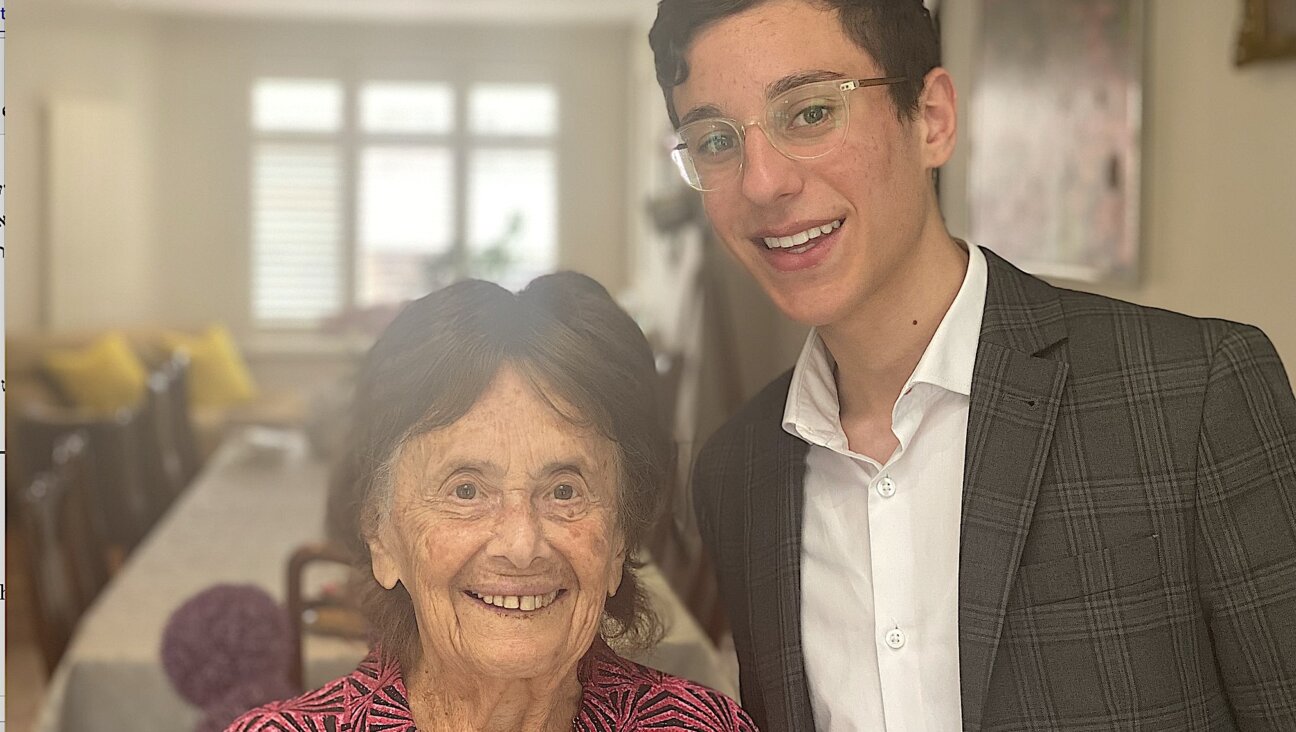Gefilte Fish: Bibi and ’Bama’s Latest Fight
With No Apology!
On January 25, 1991, in an article titled ‘With Apologies,’ Philologos answered a letter asking about the phonetic similarity of English and Hebrew pronouns. Explaining how these and other similarities were coincidental, Philologos found fertile ground for other, related linguistic observations.
Nearly 20 years (1,001 weeks) have passed and below begins the 1,000th On Language column. Over the years, many topics (Uzis, kasha varnishkes, Henry Roth) have been covered, but it seems fitting that the subject of fascination for this landmark column is the entirely homely and exceedingly strange gefilte fish.
Hats off to Philologos. Here’s to 1,000 more!
As if Bibi and ’Bama didn’t have enough to argue about, we now have the Great Gefilte Fish Crisis.
Your grandchildren will read about it in the history books. A few days before Passover, two containers of frozen United States carp meant for gefilte fish eaters in Israel were impounded in the port of Ashdod because the American exporter and Israeli importer were unaware of a new customs duty on foreign fish and refused to pay it. The exporter appealed for support to the American government, which reportedly protested to Prime Minister Benjamin Netanyahu that an Israeli tax on American carp would aggravate America’s unemployment. (How many American carp are employed by Israel, America’s statement did not say.) As I write this column, it is unclear whether the fish will defrost in time to reach Israeli tables during the holiday, let alone how long it will take America and Israel to calm down about more important things.
But let’s stick to gefilte fish (or “gefillte,” if you prefer a double Germanic “l” to a single English one). The term itself has become a misnomer, since it means “stuffed fish” in Yiddish, and the gefilte fish that is generally eaten today is the stuffing alone, minus the fish skin it once filled. It is the same as if we were to call turkey stuffing “stuffed turkey.” Though that would sound absurd to our ears, “gefilte fish” doesn’t bother us, because few of us know or think about the words’ literal meaning.
What is linguistically interesting about gefilte fish, however, is not that. Rather, it is what has come to be known to Yiddish linguists as “the gefilte fish line,” an expression that refers to the curious fact that the traditional boundary in Eastern Europe between different ways of making gefilte fish was also the traditional boundary between different ways of speaking Yiddish.
Any lover of gefilte fish — and it is a dish that tends to arouse strong passions for and against — knows that (aside from the age-old debate over precisely what fish or combination of fish yields the ideal results) there are two main schools of gefilte fish makers: the sweet and the nonsweet. The first puts sugar in its gefilte fish, which, devotees of the second school claim, makes it taste like a fishy candy bar; the second prefers the pepper grinder, which, followers of the first school insist, causes them to sneeze instead of smack their lips.
This controversy is unresolvable and will go on for as long as gefilte fish is eaten. Although today it has been reduced to an issue of taste and custom, most people favoring the kind of gefilte fish that was made by their mother or favorite aunt over the kind that wasn’t, it was once part of a greater division — namely, that between Polish and Russian Jewry. Jews living in Poland sweetened their gefilte fish and spoke certain dialects of Yiddish. Jews living in Lithuania, Belarus and Ukraine ate their gefilte fish unsweetened and spoke other dialects.
This isn’t, as it is sometimes assumed to be, a simple matter of peppery “Litvaks” vs. sugary “Galitzianers,” or even Litvaks vs. Polish Jews. Eastern European Yiddish is commonly divided, largely on the basis of the pronunciation of its vowels, into the three main dialect areas of Central Yiddish, Northeast Yiddish and Southeast Yiddish, with Central Yiddish having been spoken in Poland (including Galicia), eastern Slovakia and northern Hungary; Northeast Yiddish in Latvia, Lithuania and Belarus, and Southeast Yiddish in Ukraine and Romania. Each of these areas, in turn, had its sub-regions, and each was sometimes linguistically closer to one of its two neighbors and sometimes to the other. Thus, for example, the Yiddish word for “what” is vos in both Northeast and Southeast Yiddish, and vus in Central Yiddish, whereas “good” is gut in Northeast Yiddish and geet in Central and Southeast Yiddish.
And where did the “gefilte fish line” run? Almost exactly along the boundary separating Central Yiddish, on the one hand, from Northeast and Southeast Yiddish, on the other. There is a map of this line in Volume III of “The Language and Cultural Atlas of Ashkenazic Jewry,” published by the Yivo Institute for Jewish Research, showing exactly where in Eastern Europe gefilte fish was sweetened and where it wasn’t. Starting some 100 miles northeast of Warsaw, the frontier ran in a southeasterly direction, with an eastward bulge in eastern Galicia, which is today in western Ukraine. To the west of it, gefilte fish was sweet; to the east, it wasn’t. The frontier between vus and vos followed the very same path.
Does this mean that the food we eat affects the way we pronounce our vowels or vice versa? Obviously not. But it does mean that people who speak differently will tend to differ in other habits, as well. We feel closer to people who speak like us than we do to people who don’t, and closer to people who eat like us than we do to people who don’t. It’s not surprising that the two things should overlap.
For further news of the Great Gefilte Fish Crisis, consult your local carp breeder.
Questions for Philologos can be sent to [email protected].



















